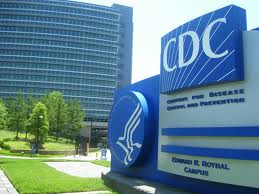The Ebola virus causes an acute, serious illness which is often fatal if untreated. Ebola virus disease (EVD) first appeared in 1976 in 2 simultaneous outbreaks, one in Nzara, Sudan, and the other in Yambuku, Democratic Republic of Congo. The latter occurred in a village near the Ebola River, from which the disease takes its name.
The current outbreak in west Africa, (first cases notified in March 2014), is the largest and most complex Ebola outbreak since the Ebola virus was first discovered in 1976. There have been more cases and deaths in this outbreak than all others combined. It has also spread between countries starting in Guinea then spreading across land borders to Sierra Leone and Liberia, by air (1 traveller only) to Nigeria, and by land (1 traveller) to Senegal.
The most severely affected countries, Guinea, Sierra Leone and Liberia have very weak health systems, lacking human and infrastructural resources, having only recently emerged from long periods of conflict and instability. On August 8, the WHO Director-General declared this outbreak a Public Health Emergency of International Concern.
A separate, unrelated Ebola outbreak began in Boende, Equateur, an isolated part of the Democratic Republic of Congo.
The virus family Filoviridae includes 3 genera: Cuevavirus, Marburgvirus, and Ebolavirus. There are 5 species that have been identified: Zaire, Bundibugyo, Sudan, Reston and Taï Forest. The first 3, Bundibugyo ebolavirus, Zaire ebolavirus, and Sudan ebolavirus have been associated with large outbreaks in Africa. The virus causing the 2014 west African outbreak belongs to the Zaire species.
- Ebola virus disease (EVD), formerly known as Ebola haemorrhagic fever, is a severe, often fatal illness in humans.
- The virus is transmitted to people from wild animals and spreads in the human population through human-to-human transmission.
- The average EVD case fatality rate is around 50%. Case fatality rates have varied from 25% to 90% in past outbreaks.
- The first EVD outbreaks occurred in remote villages in Central Africa, near tropical rainforests, but the most recent outbreak in west Africa has involved major urban as well as rural areas.
- Community engagement is key to successfully controlling outbreaks. Good outbreak control relies on applying a package of interventions, namely case management, surveillance and contact tracing, a good laboratory service, safe burials and social mobilisation.
- Early supportive care with rehydration, symptomatic treatment improves survival. There is as yet no licensed treatment proven to neutralise the virus but a range of blood, immunological and drug therapies are under development.
- There are currently no licensed Ebola vaccines but 2 potential candidates are undergoing evaluation.
Symptoms of Ebola virus disease
The incubation period, that is, the time interval from infection with the virus to onset of symptoms is 2 to 21 days. Humans are not infectious until they develop symptoms. First symptoms are the sudden onset of fever fatigue, muscle pain, headache and sore throat. This is followed by vomiting, diarrhoea, rash, symptoms of impaired kidney and liver function, and in some cases, both internal and external bleeding (e.g. oozing from the gums, blood in the stools). Laboratory findings include low white blood cell and platelet counts and elevated liver enzymes.
U.S. DEVELOPMENTS
Nurse who treated Duncan is infected:
On Monday, a Texas Health Presbyterian Hospital nurse by the name of Nina Pham has been diagonosed having Ebola. She got a blood transfusion from American Ebola survivor Kent Brantly, according to Jeremy Blume, a spokesman for Samaritan’s Purse. Brantly was working for Samaritan’s Purse in Liberia when he contracted the virus.
The nurse had numerous contacts with Ebola patient Thomas Eric Duncan, and the Centers for Disease Control and Prevention said there may have been a “breach in protocol.” It didn’t say what the possible breach was.Duncan died last week.
The nurse is “clinically stable,” CDC Director Dr. Tom Frieden said Monday. The CDC said others who cared for Duncan could have been infected, but so far no other health workers are showing symptoms.
“They always helped other people and they take pride in helping other people. That’s what this family’s all about.”
U.S. nurses union calls for better preparation:
The National Nurses United union says 76% of nurses it questioned in 46 states said their hospitals have not communicated a policy on the potential of admitting patients infected by Ebola.
The union is asking for immediate upgrades to Ebola emergency preparations that include hands-on training and enough protective gear. The CDC said Monday it is “doubling down” on training and outreach to make every hospital “think Ebola.”
Diagnosis
It can be difficult to distinguish EVD from other infectious diseases such as malaria, typhoid fever and meningitis. Confirmation that symptoms are caused by Ebola virus infection are made using the following investigations:
- antibody-capture enzyme-linked immunosorbent assay (ELISA)
- antigen-capture detection tests
- serum neutralization test
- reverse transcriptase polymerase chain reaction (RT-PCR) assay
- electron microscopy
- virus isolation by cell culture.
The Atlanta-based Centers for Disease Control and Prevention has emerged as the standard-bearer — and sometimes the scapegoat — on Ebola.
Public health is the purview of the states, and as the nation anticipates more Ebola cases, some experts say the way the United States handles public health is not up to the challenge.
“One of the things we have to understand is the federal, state and local public health relationships,” says Michael Osterholm, director of the Center for Infectious Disease Research and Policy at the University of Minnesota. “Public health is inherently a state issue. The state really is in charge of public health at the state and local level. It’s a constitutional issue. The CDC can’t just walk in on these cases. They have to be invited in.”




